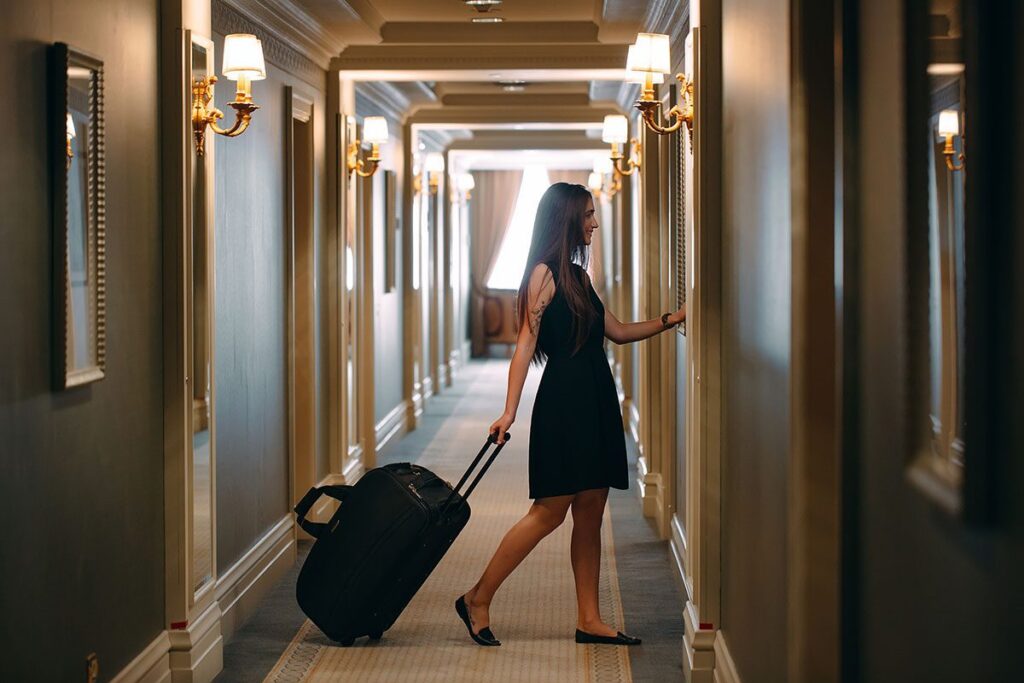Staying Safe as a Woman Traveling Alone: Self-Awareness and Safety Tools

Traveling alone as a woman can be a liberating and enriching experience, offering opportunities for personal growth, adventure, and new connections. However, it also requires a heightened sense of awareness and preparedness to ensure your safety. By combining self-awareness with practical safety tools, you can enjoy your solo travels with confidence and peace of mind. This blog will provide essential tips and strategies for staying safe while exploring the world on your own.
Self-Awareness: The Foundation of Safety

Self-awareness is the cornerstone of personal safety, particularly when traveling alone. It involves being conscious of your surroundings, understanding potential risks, and making informed decisions to avoid dangerous situations. Here are some key aspects of self-awareness for solo travelers:
- Research Your Destination
- Cultural Norms: Familiarize yourself with the cultural norms and local customs of your destination. Understanding the social etiquette can help you blend in and avoid drawing unwanted attention.
- Safety Concerns: Research the safety concerns specific to the area, such as high-crime neighborhoods, common scams, and local laws. Websites like the U.S. Department of State’s travel advisories can provide valuable information.
- Emergency Services: Know the location and contact information for local emergency services, hospitals, and your country’s embassy or consulate.
- Stay Alert and Vigilant
- Situational Awareness: Continuously assess your surroundings and be aware of any unusual behavior or potential threats. Trust your instincts. If something feels off, it probably is.
- Limit Distractions: Avoid using headphones or being engrossed in your phone while walking in unfamiliar areas. Staying alert can help you respond quickly to any potential danger.
- Blend In: Dress conservatively and avoid flashy jewelry or accessories that might attract attention. Blending in with the locals can reduce the risk of being targeted.
- Have a Plan
- Itinerary Sharing: Share your travel itinerary with a trusted friend or family member, including details of your accommodation and planned activities. Regularly check in with them to let them know you’re safe.
- Backup Plans: Have a backup plan in case something goes wrong, such as alternative accommodation options or routes to your destination.
Essential Safety Tools for Solo Travelers
Carrying the right safety tools can significantly enhance your security while traveling alone. Here are some essential tools to consider:
- Pepper Spray
- Description: A small canister of pepper spray can incapacitate an attacker, giving you time to escape.
- Benefits: It’s easy to carry, legal in many places, and highly effective.
- Training: Practice using pepper spray before your trip to ensure you can deploy it quickly and accurately if needed.
- Personal Alarm
- Description: A personal alarm emits a loud, attention-grabbing noise when activated.
- Benefits: It can deter an attacker and attract help from nearby people.
- Training: Test the alarm regularly to ensure it functions properly. Practice activating it quickly in different situations.
- Tactical Flashlight
- Description: A sturdy flashlight that can double as a self-defense tool.
- Benefits: It provides light in dark areas and can be used to disorient an attacker.
- Training: Familiarize yourself with the flashlight’s features and practice using it in low-light conditions.
- Portable Door Lock
- Description: A portable door lock adds an extra layer of security to hotel rooms or rental accommodations.
- Benefits: It prevents unauthorized entry, providing peace of mind while you sleep.
- Training: Learn how to install and remove the lock efficiently.
- Self-Defense Keychain
- Description: A keychain tool, such as a kubotan or tactical pen, designed for close-quarters self-defense.
- Benefits: It’s discreet, lightweight, and can deliver powerful strikes to sensitive areas.
- Training: Take a self-defense class that covers keychain tools. Practice striking techniques and learn how to use the tool effectively.
- Smartphone Safety Apps
- Description: Safety apps offer features like GPS tracking, emergency alerts, and quick access to help.
- Benefits: They provide an additional layer of security and can connect you with emergency contacts and services.
- Training: Familiarize yourself with the app’s features and test them regularly. Ensure your emergency contacts are aware of the app and know how to respond.
Additional Safety Tips for Solo Female Travelers
- Choose Accommodation Wisely
- Research: Read reviews and choose reputable accommodations with good security measures.
- Location: Opt for lodging in safe, well-lit areas with easy access to transportation.
- Security: Use the hotel’s safe for valuables and always lock your door. Consider using a doorstop alarm or portable door lock for added security.
- Use Transportation Safely
- Reliable Services: Use reputable transportation services, such as licensed taxis or ride-sharing apps with good reviews.
- Sit Strategically: When using public transportation, sit near the driver or other passengers.
- Stay Sober: Avoid excessive alcohol consumption, which can impair your judgment and make you more vulnerable.
- Trust Your Instincts
- Listen to Your Gut: If something doesn’t feel right, don’t hesitate to leave the area or seek help.
- Be Assertive: Don’t be afraid to be assertive if someone is making you uncomfortable. Your safety is paramount.
- Stay Connected
- Communication: Keep your phone charged and have local emergency numbers saved.
- Backup Battery: Carry a portable charger to ensure your phone is always operational.
- Local SIM: Consider getting a local SIM card to ensure reliable communication and internet access.
Training and Preparation
Proper training and preparation are essential for effectively using self-defense tools. Here are some tips:
- Self-Defense Classes: Enroll in self-defense classes to learn practical techniques and build confidence.
- Practice Regularly: Regularly practice using your self-defense tools to ensure you can deploy them effectively in an emergency.
- Stay Informed: Keep up with new safety tips, tools, and techniques by reading blogs, joining online communities, or attending workshops.
Traveling alone as a woman can be a transformative experience, filled with adventure and self-discovery. By maintaining self-awareness and equipping yourself with essential safety tools, you can navigate your travels with confidence and security. Remember, preparation is key. Know your surroundings, trust your instincts, and stay connected. With the right mindset and tools, you can explore the world safely and make the most of your solo adventures.
Download our travel safety checklist below.
Stay connected with us on Facebook and Instagram for more self-defense tips, safety insights, and empowering content tailored to help women walk their path with confidence. Let’s keep the conversation going. Join us today!






[…] Traveling […]